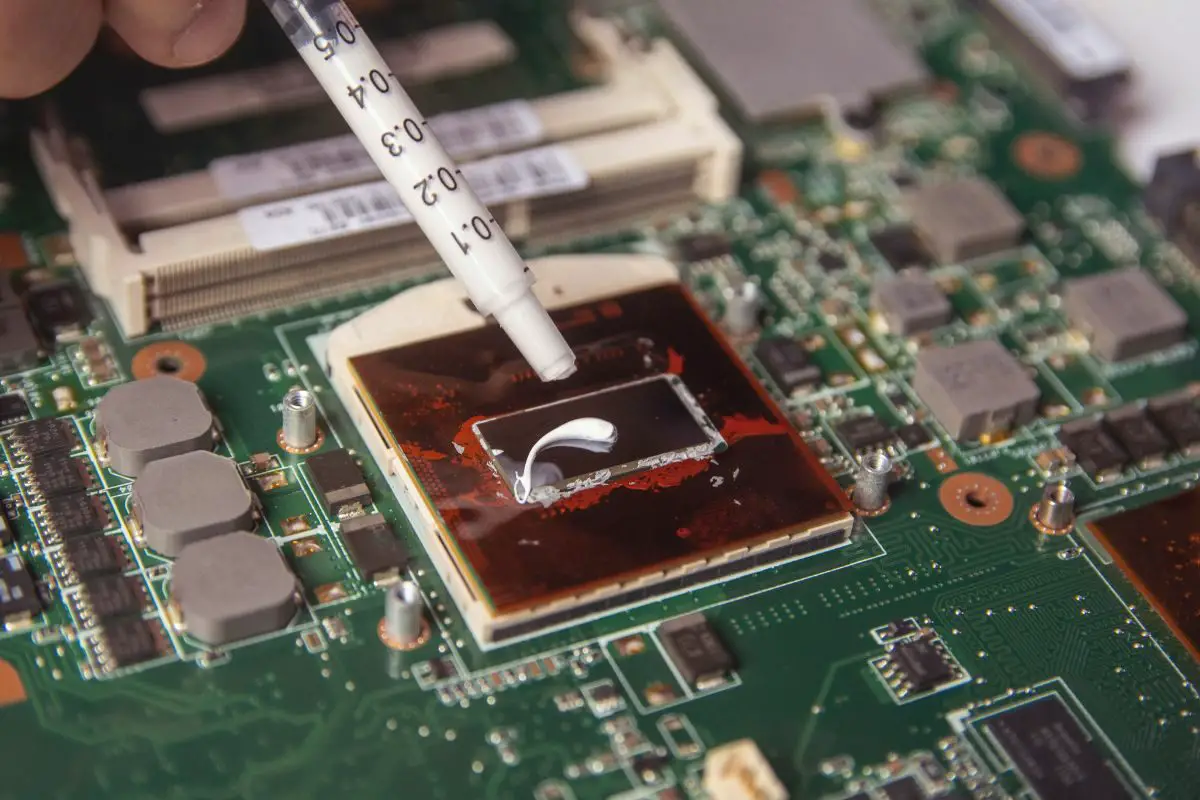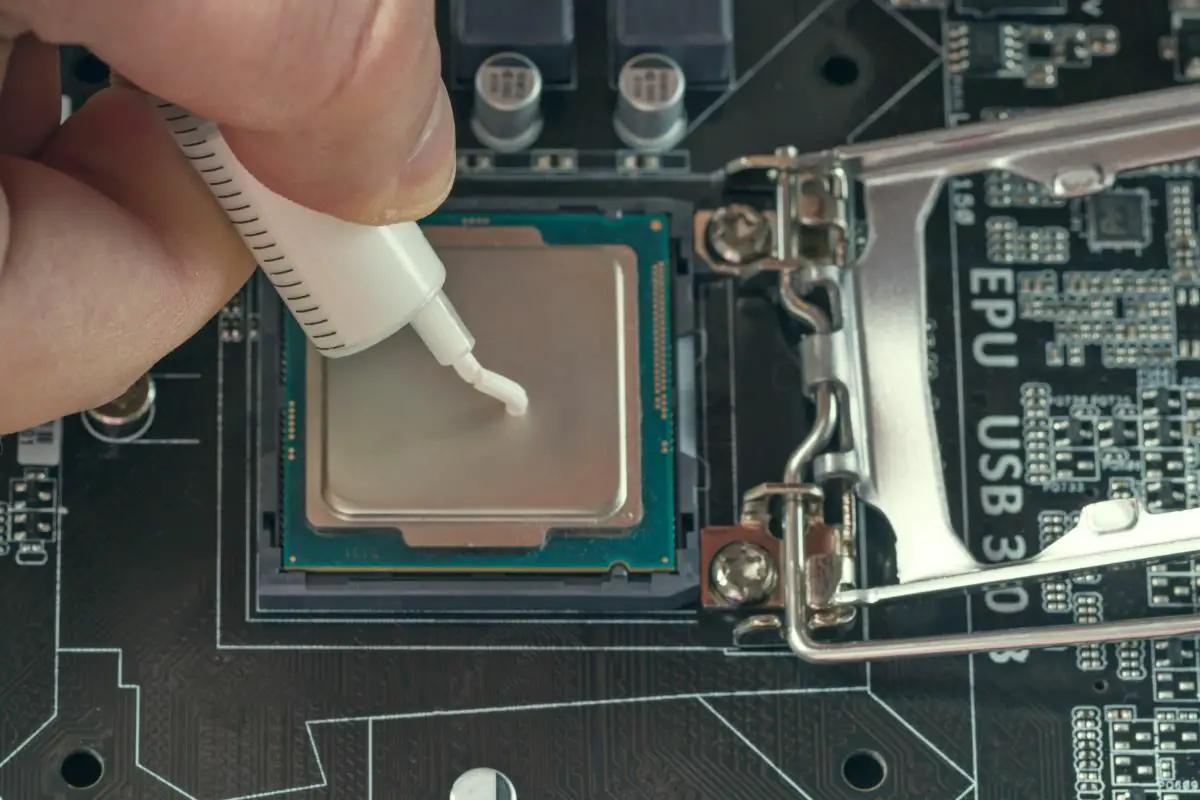
If you're planning on building a new computer or upgrading your processor, it's essential that you know that processors themselves don't come with thermal paste pre-applied. CPU coolers are the ones that come with pre-applied thermal paste, but not all of them do. However, when a stock cooler comes with AMD or Intel processors, it almost always has thermal paste already.
When I first started my PC-building journey, I once bought an Intel CPU with an aftermarket cooler, assuming that there was going to be thermal paste pre-applied to the CPU. But it was only when it was finally delivered that I realized my mistake. I still needed to improve my CPU's cooling, though. So I decided to learn all there is about processors and the thermal compound that they need for cooling.
So, do CPUs come with thermal paste pre-applied? This guide has the answers you're looking for, so let's get right into it.
Contents
If you're buying a CPU, can you expect it to come with thermal paste?
Well, sort of. Whether you're going for AMD or Intel CPUs, the processors themselves never come with their own thermal paste.
However, once that processor comes with a stock cooler, there's a much higher chance that there will be pre-applied thermal paste on it. In fact, as far as I know, all stock CPU coolers have pre-applied thermal paste.
Not all processors come with CPU coolers though, so it is important to know which ones do and which ones don't. The next sections will dive into that for both AMD and Intel CPUs.

So, if you're going to buy an Intel CPU, it is important to figure out whether it comes with a stock cooling solution.
If it doesn't, you'll need to shop for your own thermal paste, but if it does, you can get along fine with what Intel has applied for you.
There's a general rule to help you find out which Intel CPUs come with a cooler and thermal paste. The high-performance Intel CPUs (which are typically those unlocked for overclocking) do not come with a stock cooler.
This includes Intel CPUs with a K, KF, KS, X, or XE suffix at the end of the model number. Once you see any of these letters, you'll need to get an aftermarket CPU cooler. This makes sense, as most power users would rather have a third-party CPU cooler anyway.
That means that for all the other Intel CPUs, you'll typically get a stock cooling solution with pre-applied thermal paste.
So, for instance, an Intel Core i9-13900F will come with an Intel stock cooler — the Intel Laminar RH1, to be exact. However, an Intel Core i9-13900K will not have any kind of thermal solution included with it.
If you'd rather have an AMD CPU, you also need to figure out whether it's going to come with a CPU cooler and stock thermal paste.
Unfortunately, figuring out which AMD CPUs come with a CPU cooler can be hard to figure out. Unlike with Intel, there's no clear pattern to it.
The AMD Ryzen 7000 series is easy enough to understand because it is only the AMD CPUs without a suffix that come with a CPU cooler. That is, the Ryzen 9 7900, Ryzen 7 7700, and the Ryzen 5 7600.
However, with the 5000 series, it can be hard to know when you can expect these CPUs to come with thermal solutions. For instance, while the Ryzen 5 5500 and 5600 models come with a CPU cooler, so do the 5600G, 5600X, and the Ryzen 7 5700G.
It's a good idea to read the technical specs of the AMD processor you want to buy to tell whether it comes with a CPU cooler, and in turn, thermal paste.
So now that you know that not all CPUs come with thermal paste and a CPU cooler, you'll realize that you need to get an aftermarket cooler with some of them.
Most aftermarket coolers come with thermal paste. A few of them have the thermal paste pre-applied just like on stock coolers, but there are also many options that come with a tube of thermal paste, for you to apply on your own.

For instance, the Noctua NH-U12S Redux comes with its thermal compound applied from the factory. This is perfect if you don't want to attempt to apply thermal paste on your own.
However, the Noctua NH-U9 TR4-SP3 is a cooler that comes with thermal paste, but it comes in a syringe. You'll need to apply this by yourself, though it is not too much of a complicated process with the right guidance.
And then, some coolers, especially at the lower end of the spectrum, don't come with any thermal paste at all. This Amazon Basics cooling solution is a good example of one that doesn't have CPU thermal paste in the box, whether pre-applied or in a syringe.
If your processor comes with a CPU cooler, you can simply install it without worrying about applying thermal paste or anything. Plus you don't need to fork out any extra cash. So, what exactly are the benefits of opting for an aftermarket cooler?
Here are some of the reasons why you might prefer a third-party processor cooler:
The only reason not to get a third-party cooler is if they are out of your budget. Admittedly, many are quite expensive, though there are several affordable options that you can choose from.
Now that you know that CPU coolers come with thermal paste, you might be wondering whether you should add any more or exactly how much thermal paste you should supplement it with.
Here's the thing, for coolers that come with thermal paste, what's already on the bottom of the block will entirely suffice. By the time you add any extra to it, it is going to be too much thermal paste.
If the cooler comes with new thermal paste, just install it like that.
However, as a power user, you might want to clean off what was pre-applied and apply thermal paste from your favorite brand.

If you go for a processor or cooler that doesn't come with thermal paste, you'll need to buy your own. You might get confused when shopping though, since there are so many different kinds of thermal pastes available.
If you hear the terms "thermal grease" or "thermal compound", they each still refer to thermal paste. They're all the same thing.
What makes most of them different is their composition, so let's talk about some of the variants there are.
It is essential that you know exactly how to apply thermal paste to your processor. If you apply the thermal paste in the wrong way, you can damage your motherboard or create a suboptimal cooling experience.
The good thing is that it's not really hard to apply most thermal paste to your CPU if you follow the right steps.
Before you start, just make sure you have the following things ready:

Follow these steps to apply thermal paste to your CPU:
It might take a lot of trial and error, but once you get the hang of applying thermal paste to your CPU effectively, it becomes something you can do pretty easily.
So, do CPUs come with thermal paste pre-applied to them? The answer is no. In the case where there is a pre-applied paste, it is on the included cooler's heatsink. However, not every AMD or Intel processor will have an included boxed cooler. Typically, the higher in performance Intel or Ryzen CPUs go, the less likely it is that they will have a cooler.
If you're going to buy an aftermarket CPU cooler though, you should know that not all of those come with pre-applied thermal paste. Some do, but most of them will come with thermal paste in a syringe, for you to apply by yourself. This is more reason why it is important to know how to apply thermal paste properly.
Was this article able to show you whether CPUs come with thermal paste applied or not? If so, take a look at our related articles to learn more to help you with your PC build.
